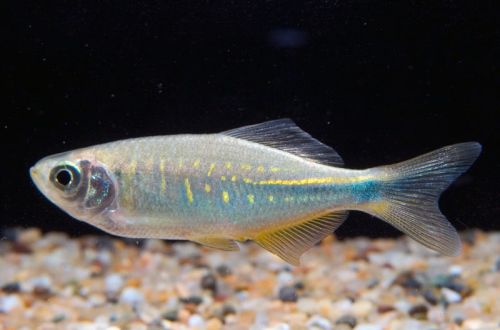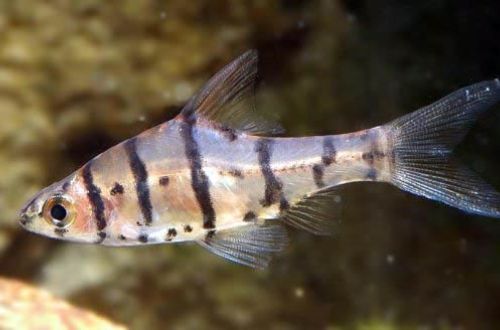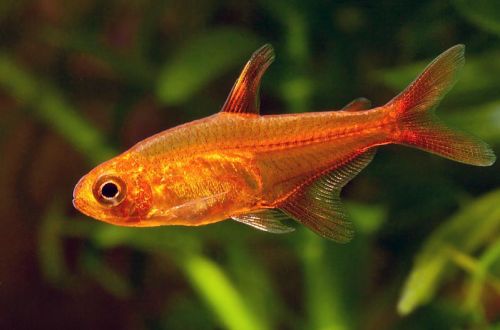
Black swordsman
Black swordsman, scientific name, scientific name Xiphophorus-hellerii (variety Black), belongs to the Poeciliidae family. The fish is distinguished by a solid dark body color, for which it got its name. Under certain lighting, blue-green reflections may appear.

Artificially bred, does not occur in the wild. It is the result of a long selection process. There are several breeds with black coloration, but the most popular for sale is a hybrid between the common Green Swordsman and one of the Pecilia varieties.
Males reach a length of about 7-8 cm, excluding the “sword”. Females are somewhat larger (up to 10 cm) and lack a characteristic feature in the form of elongated lower rays on the tail. The coloration is the same in both sexes.
Brief information:
- The volume of the aquarium – from 80 liters.
- Temperature – 16-28°C
- Value pH — 7.0–8.0
- Water hardness – soft to high (10-30 dGH)
- Substrate type – any
- Lighting – moderate or bright
- Brackish water is permissible in a salt concentration of up to 15 g per 1 liter
- Water movement – light or moderate
- The size of the fish is 7–10 cm.
- Food – any food
- Temperament – peaceful
- Content alone, in pairs or in a group
Maintenance and care

They are considered simple and unpretentious in content. Optimal conditions are achieved in a spacious aquarium with clean, warm water and a few shelters. As the latter, thickets of plants or any other design element (natural or decorative) can act.
The black swordtail is able to adapt to a fairly wide range of temperatures, pH and dGH values. In some cases, it can live in unheated aquariums (without heaters).
Aquarium maintenance is standard and includes several mandatory procedures: weekly replacement of part of the water with fresh water, removal of organic waste, equipment maintenance.
If there are many fish in the same tank at the same time and/or a simple filtration system such as an airlift filter is used, the water will need to be changed more frequently.
Food. Accepts almost all types of food intended for aquarium fish. In a daily diet, it is recommended to combine vegetable and protein products: spirulina flakes with live or frozen artemia, bloodworms, daphnia, etc.
behavior and compatibility. Males compete with each other for the attention of females. Rivalry can sometimes be quite fierce, so in small aquariums and in the absence of shelters, injuries are not uncommon. The females are peaceful.
Compatible with many other non-aggressive species of comparable size. However, it is worth remembering that due to the close relationship with Pecilia, hybrid offspring may appear. Crossbreeding can also occur with Mollies.





